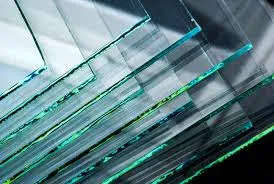నవం . 02, 2024 04:47
From Transparent to Opaque Glass A Modern Design Revolution
In today’s architectural and interior design landscape, glass has evolved far beyond its traditional role as a mere window to the world
. The transition from transparent to opaque glass reflects not only aesthetic preferences but also innovative technological advancements and a deeper understanding of privacy, safety, and energy efficiency.Transparent glass has long been celebrated for its ability to create an illusion of space, allowing natural light to flood into buildings and connecting indoor and outdoor environments. This property is particularly valued in homes, offices, and public spaces where openness and visibility are desired. However, the rise of urban living has brought about a corresponding demand for privacy and the need to shield inhabitants from prying eyes. This need has catalyzed the development of opaque glass, an intriguing material that offers a perfect balance between light admission and privacy.
Opaque glass comes in various forms, such as frosted, tinted, or etched. Each variation serves specific purposes while also adding a unique touch to design aesthetics. For instance, frosted glass, known for its soft diffusion of light, is frequently used in bathrooms and conference rooms, providing privacy without sacrificing illumination. Tinted glass, with its colored hues, can control glare and enhance energy efficiency, making it a preferred choice for commercial buildings in sunny climates. Meanwhile, etched glass can deliver intricate designs that serve as functional art pieces, contributing both beauty and seclusion to any space.

The technological advancements in glass manufacturing have also led to the emergence of smart glass, another fascinating step in the evolution from transparent to opaque. This cutting-edge material can change its opacity at the touch of a button or in response to environmental factors, such as sunlight intensity. Smart glass not only optimizes natural lighting but also enhances energy efficiency by reducing the reliance on artificial lighting and air conditioning. This evolution emphasizes a growing consciousness towards sustainability in architecture, pushing the boundaries of what glass can accomplish.
Furthermore, opaque glass supports various practical applications in everyday life. From partitions in office spaces to shower doors that blend functionality with style, the versatility of opaque glass is evident. It can create intimate spaces within open environments, allowing for fluid collaboration without exposure. This adaptability has made it especially popular in modern workplaces that prioritize flexible layouts and innovative design solutions.
The shift from transparent to opaque glass also symbolizes a broader cultural trend towards the importance of personal space in an increasingly connected world. As urban areas become denser and living spaces smaller, the desire for refuge and privacy grows stronger. Opaque glass provides a means of achieving that sanctuary while still celebrating the elegance of design and the flow of light.
In conclusion, the movement from transparent to opaque glass is a testament to the innovation and creativity present in modern architecture and design. It illustrates a harmony between aesthetic appeal and functional necessity, addressing contemporary needs while forecasting future trends. As technology continues to evolve, the possibilities for glass as a medium are bound to expand, paving the way for even more exciting developments in the world of design.
The Role of Mirror Glass in Luxury Interior Design
NewsJun.23,2025
The Best Textured Glass for Bathroom Windows
NewsJun.23,2025
Residential Glazing Energy Efficiency Requirements
NewsJun.23,2025
Float Glass Uses
NewsJun.23,2025
Clear Float Glass For Solar Panel Covers
NewsJun.23,2025
Benefits Of Using A Glass Mouse Pad Over Traditional Ones
NewsJun.23,2025